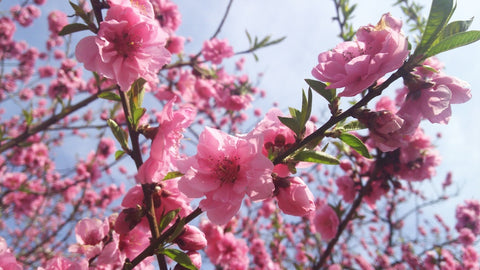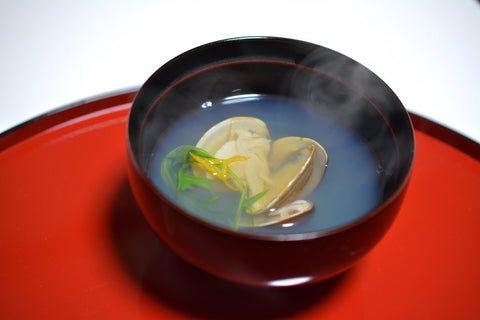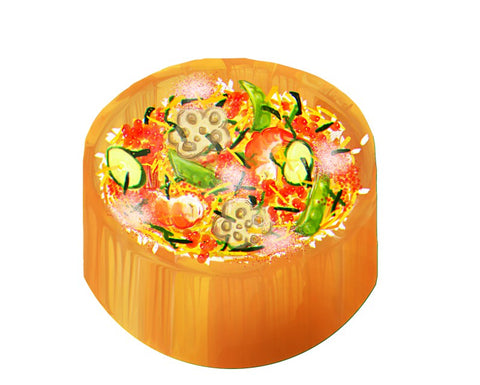
What is Hinamatsuri 雛祭り
Hinamatsuri is celebrated on 3rd March every year. It is one of the five seasonal festivals, gosekku 五節句 in the traditional Japanese calendar.
Families bring out Hina-ningyo 雛人形 decorations, a set of ornamental dolls representing the Emperor and Empress in traditional court dress of the Heian period. The more elaborate versions include their attendants and musicians and comprise of more than five tiers. The one in above picture is a three tier set.
Special food is enjoyed, with the hopes of bringing good fortune to the girls in the family.
But it didn’t always be a day for girls. The origins date back to China around the year 300, when it was believed that the change of the seasons were a vulnerable time when evilness could creep in. And so began a custom to perform purifying rituals at the water banks.
These rituals eventually made their way to Japan and adapted in various ways. In the Heian period, members of the royal court would brush their bodies with dolls made with hay and release them in the rivers. This was an adaptation of the Oharai お祓い cleansing ritual that was performed by people dipping in the water, but instead they washed away their impurities by transferred them to the doll.
Hinamatsuri aka Momonosekku

Hinamatsuri is also known as Momonosekku 桃の節句 meaning peach festival. This because in the traditional Japanese calendar this was the time peach trees blossomed. The second reason was because peach trees were believed to be sacred and cleansed evil vibes.
As doll making techniques improved, it became more popular to use them as decoration than with them than letting them loose in the water. So it developed into this custom now to display dolls and celebrate the life of the girls in the family.
So now we know that the third of March is a day to celebrate the coming of spring, to be grateful to be here in its presence, and pray for a healthy life.
Let’s eat, drink, and be glad to be here!
Festive Drink for Hinamatsuri – Amazake

Peach was a symbol of longevity, so the old tradition was to drink Toukashu 桃花酒, a sake drink adorned with peach petals. During the edo period, this adapted into a white sake, but having alcohol, it was always a drink reserved for the adults. Eventually, amazake was introduced, a drink made with sake lees of which alcohol evaporates during the heating process and suitable for children.
So’s special amazake is made with sake lees from Dojima Sake Brewery, in Cambridge. Dojima Sake Brewery is the first Japanese owned Sake Brewery in the UK. Read all about them in ikisho’s Blog here.
Festive Soup for Hinamatsuri – Hamaguri Clam Osumashi Soup

Like mentioned above, Hinamatsuri has its roots as a ritual by the water. This is the reason for a dish with seafood, clams. Hamaguri Clams are a symbol of partnership as the shell from one clam will never fit another hamaguri clam ♡
This soup is enjoyed with the hopes that we will meet a good partner that we will be forever happy with.
Festive Food for Hinamatsuri – Chirashi Sushi

Chirashi Sushi is a staple Hinamatsuri Food. One big reason is of course the seafood toppings. So’s version is adorned with a generous mixture of diced homemade smoked salmon, grilled eel kabayaki, tiger prawns, and flying fish roe. As we are also celebrating the coming of spring, we add colourful topping to this; kinshi egg (thin egg slices), slices of shiitake mushrooms simmered in sweet soy, cubes of vinegared lotus root, greens, carrots, and pickles. The ingredients symbolise health and longevity, and is a vision of blooming spring!
Celebrate this seasonal event with So’s Hinamatsuri Festive Food!
Booking starts at 2pm on Sunday 14th February 2021. Only a few limited sets!
Sign up to our newsletter to be the first to know about our seasonal menus and special offers!


